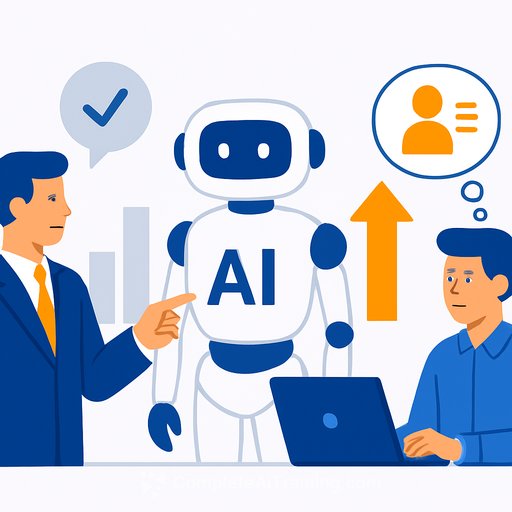Managers Are Starting to Trust AI Agents More Than Junior Staff
New data from SnapLogic shows how quickly AI has moved into day-to-day work. 81% of employees now use AI tools on the job. 57% use AI agents regularly to save time.
But there's friction. 43% of workers worry they'll be seen as lazy or untrustworthy for using AI, and 24% feel judged or second-guessed. Despite that, trust in outcomes is rising across teams.
What This Means for Management
More than half of respondents (52%) think they'll manage AI agents more than people in the future. 61% say managing agents would be easier than managing humans. 46% even expect they could be managed by an AI agent one day.
As one expert put it: "The future of work isn't about replacing people, but instead using AI as a partner to strengthen what's uniquely human: strategy, insight, and innovation." Treat agents as force multipliers, not headcount replacements.
The Training and Confidence Gap Is Real
Only 36% have formal AI training. 54% are self-taught by trial and error. Confidence is uneven: 70% of managers feel "very confident," but just 33% of non-managers do.
That gap fuels shadow AI, inconsistent quality, and stalled adoption. If you want reliable outcomes, you need structure, training, and clear oversight.
Action Plan: Build an AI-Enabled Team Without Losing Trust
- Publish a clear AI use policy. Define approved tools, data boundaries, review requirements, and where human sign-off is mandatory.
- Create agent ownership. Assign a product-style owner for each agent. Document purpose, inputs, outputs, failure modes, and escalation paths.
- Start with low-risk, high-ROI use cases. Summarization, data prep, QA checks, draft generation. Keep a human-in-the-loop until quality is proven.
- Measure what matters. Track cycle time, error rates, customer impact, and rework. Compare agents vs. human baselines before scaling.
- Level up skills fast. Give everyone baseline AI literacy. Offer role-specific training for ops, finance, sales, support, and engineering. Consider certification to validate proficiency. Explore AI courses by job and AI automation certification.
- Keep juniors in the loop. Pair junior staff with agents. Require rationale notes and reviews. Use agents to accelerate learning, not replace it.
- Adopt a risk framework. Apply access controls, data retention rules, bias checks, and audit trails. Align with guidance like the NIST AI Risk Management Framework.
Hiring and Org Design Implications
- Redesign roles. Expect fewer pure entry-level tasks and more work in orchestration, QA, and exception handling.
- Update career ladders. Reward agent supervision, prompt design, data judgment, and cross-functional problem solving.
- Revamp interviews. Test candidates on how they brief agents, validate outputs, and document decisions.
- Plan headcount with intent. Use agents to free capacity for higher-value work, not to defer strategic hiring.
Practical Guardrails for Agent Trust
- Prohibit agents from final decisions on compensation, termination, legal matters, or safety.
- Require provenance logs for every agent action and output.
- Use dual-control approvals for external communications and high-impact changes.
- Red-team agents before production and maintain fast rollback procedures.
Bottom Line
Managers are warming to AI agents-even more than junior staff in some cases-but trust should be earned through process, proof, and training. Build the system: policy, ownership, metrics, and education. Then scale what works.
The companies that win won't replace people. They'll pair people with AI to compound strategy, insight, and innovation-and they'll train everyone to use it well.
Your membership also unlocks:






